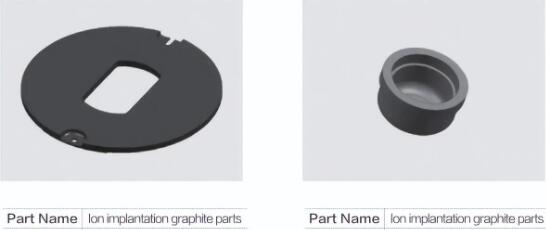Currently, the industry-standard PVT (Physical Vapor Transport) method is predominantly used for commercial silicon carbide (SiC) single crystal growth in China. This technique employs induction coils for heating, which generate eddy currents that thermally energize a high-density graphite susceptor. SiC source powder is densely packed into the bottom of a graphite crucible. A silicon carbide (SiC) seed crystal is mounted on the inner surface of the crucible lid at a specific distance above the source material. The entire graphite crucible assembly is then positioned within the graphite susceptor. By precisely adjusting the temperature of the external graphite felt insulation layer, the SiC source material is maintained within a high-temperature zone, while the corresponding SiC seed crystal resides in a controlled low-temperature zone.
In this process, the region comprising the crucible and surrounding insulation materials constitutes the most critical zone for SiC single crystal growth, known as the thermal field. Currently, SiC crystal growth furnaces internationally utilize medium-frequency heating technology. A key characteristic of this technology is its ability to achieve extremely high temperatures within the crystal growth chamber (exceeding 3000°C). Under these extreme conditions, graphite and graphite-based components excel as they can withstand such elevated temperatures and, crucially, do not react with the sublimated SiC species.
Porous Graphite for Defect Reduction
Silicon carbide (SiC) crystal growth presents significant challenges, characterized by lengthy R&D cycles and high development costs. Consequently, reducing R&D costs, accelerating development timelines, and improving crystal quality constitute critical challenges for industry advancement. In recent years, the introduction of porous graphite (PG) has proven effective in enhancing crystal growth quality. The integration of porous graphite plates into SiC crystal growth furnaces has emerged as a prominent research focus within the industry.
(a)Traditional crystal growth furnace (b)Crystal growth furnace for porous graphite plates
Furthermore, the insertion of porous graphite (PG) plates above the SiC source powder enables optimized gas-phase mass transfer dynamics within the crystal growth region. This effectively addresses several persistent technical challenges inherent in conventional crystal growth furnaces. Research demonstrates that PG application contributes to a significant reduction in micropipes alongside other defects. Critically, porous graphite serves as a core technological approach for achieving substantial SiC crystal thickness. It functions by balancing vapor-phase composition, intercepting trace impurities, modulating localized temperature gradients, and suppressing the formation of carbon inclusions and other particulate defects. Consequently, while maintaining crystal usability, significantly enhanced crystal thickness can be attained.
Graphite Susceptors
Graphite susceptors are critical components in Metal Organic Chemical Vapor Deposition (MOCVD) equipment, serving to support and heat single-crystal substrates. The thermal stability, thermal uniformity, and other performance parameters of SiC-coated graphite susceptors decisively influence the quality of epitaxial material growth, making them core components of MOCVD systems.
In silicon carbide (SiC) epitaxial processes, wafers are carried on graphite plates (susceptors), which are categorized into barrel-style, pancake-style, and single-wafer configurations.These susceptors are typically coated with SiC, where the coating forms a strong bond with the graphite substrate, significantly extending the component’s service life while enabling the high-purity surface characteristics essential for semiconductor material production.Alternatively, TaC coated porous may be applied, offering superior thermal resistance compared to SiC-coated graphite products
Graphite Components for Ion Implantation
Ion implantation is a process wherein ion beams (such as boron, phosphorus, or arsenic) are accelerated to specific energies and implanted into the near-surface region of a wafer substrate to modify its electrical and structural properties.Components within ion implantation systems demand exceptionally high-performance materials characterized by outstanding thermal resistance, excellent thermal conductivity, minimized corrosion induced by ion beams, and high-purity material with low impurity levels.
SiC crystal growth systems primarily consist of a graphite crucible, seed crystal, and SiC source powder, among which graphite consumables represent a significant portion of the total production cost. To ensure cost-effective SiC crystal growth and maintain high product yield rates, demand continues to rise for advanced coating materials such as SiC or TaC coatings on graphite components. Objectively speaking, substantial room for technological advancement remains in domestically produced equipment and consumables; nevertheless, multiple Chinese enterprises are actively breaking through critical technological bottlenecks across key areas.
Post time: Jun-26-2025


